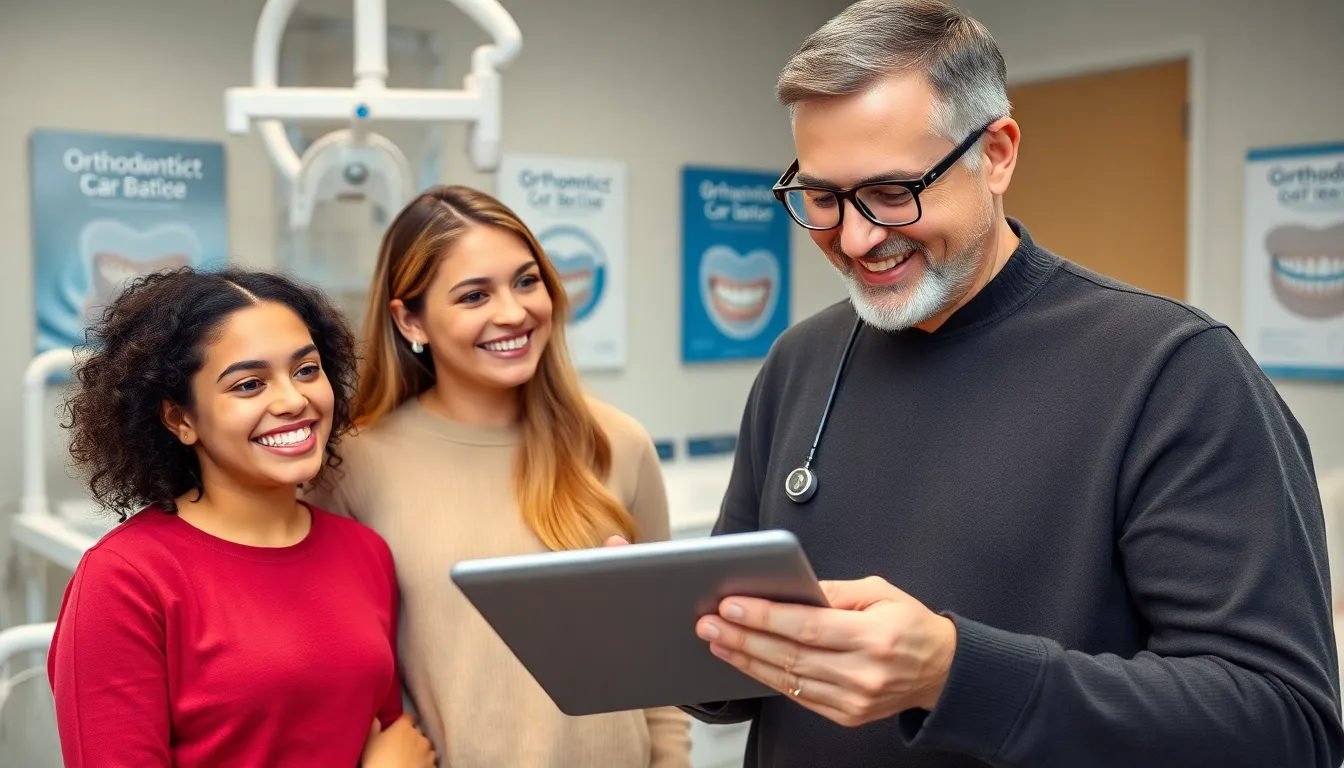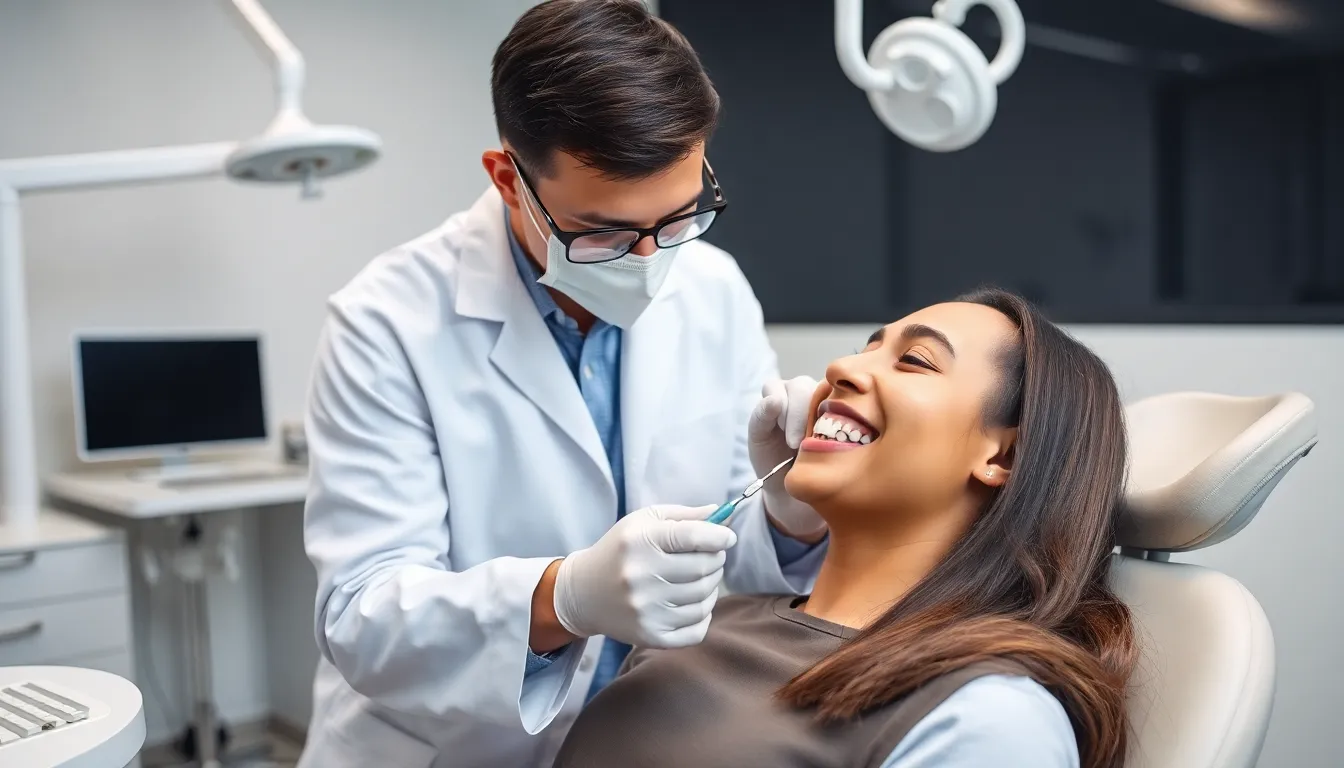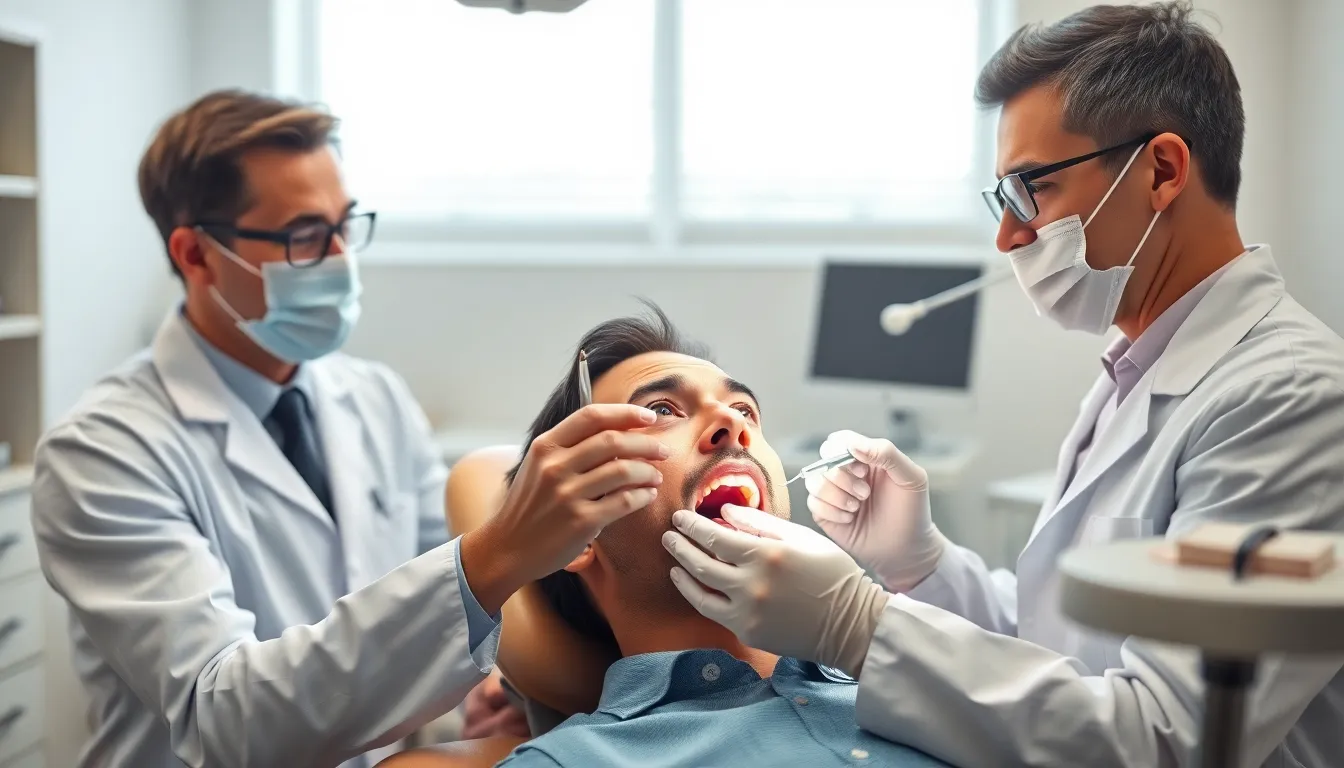Wondering how often orthodontist appointments are scheduled during your treatment journey? The frequency of these visits can significantly impact your planning, schedule, and overall orthodontic experience.
When you begin orthodontic treatment, whether with traditional braces or clear aligners, you’ll need to establish a regular appointment schedule with your orthodontist. Typically, most patients visit their orthodontist every 4-8 weeks, but this timing varies based on your exact treatment plan, the complexity of your case, and the type of orthodontic appliance you’re using. Understanding what to expect about appointment frequency can help you better prepare for your orthodontic journey and ensure your treatment stays on track for that perfect smile.
Understanding the Frequency of Orthodontic Appointments
Orthodontic treatment schedules follow predictable patterns based on your exact treatment needs. Most patients visit their orthodontist every 4-8 weeks throughout their treatment journey. These regular check-ups allow your orthodontist to monitor progress, make necessary adjustments, and ensure your treatment stays on track.
Sarah, one of our patients at Innovative Orthodontics, initially worried about fitting frequent appointments into her busy work schedule. “I was concerned about how often I’d need to come in,” she shared. “But Dr. Harris worked with me to schedule appointments during my lunch breaks, and the visits were usually quick and efficient.”
Your appointment frequency depends on several factors that your orthodontist considers when creating your personalized treatment plan. Traditional braces typically require visits every 4-6 weeks for wire changes and adjustments. Clear aligner treatments like Invisalign might involve check-ups every 6-8 weeks to receive new sets of aligners and verify tooth movement is proceeding as planned.
Dr. Todd B. Harris explains, “The frequency of appointments is customized to each patient’s unique needs. Some complex cases require more frequent monitoring, while others progress smoothly with longer intervals between visits. We’re always mindful of our patients’ time constraints while ensuring optimal treatment outcomes.”
During active orthodontic treatment, your orthodontist monitors tooth movement, adjusts appliances, and addresses any issues that arise. These regular appointments are crucial touchpoints that keep your treatment progressing efficiently toward your goal of a beautiful, functional smile.
Typical Orthodontic Treatment Timeline

Orthodontic treatment progresses through three distinct phases, each with its own appointment frequency requirements. Understanding this timeline helps you plan accordingly and sets realistic expectations for your orthodontic journey.
Initial Consultation Phase
The initial consultation marks the beginning of your orthodontic treatment journey. During this appointment, your orthodontist thoroughly evaluates your teeth, jaw structure, and bite to develop a personalized treatment plan customized to your exact needs. Many patients, like Michael, a high school teacher who came to our practice concerned about his crooked front teeth, find this consultation reassuring. “I was nervous about starting orthodontic treatment at 35,” Michael shared, “but Dr. Harris took time explaining exactly what would happen and when, which made the whole process less intimidating.” This first visit establishes treatment goals and expectations without actually beginning active treatment.
Active Treatment Phase
Active treatment involves wearing orthodontic appliances such as metal braces, ceramic braces, or clear aligners to gradually move your teeth into proper alignment. Appointments during this phase typically occur every 4-8 weeks, with more frequent visits (every 4-6 weeks) during the early stages when initial adjustments are needed. Dr. Harris notes, “The first few months of treatment often require closer monitoring to ensure teeth are responding appropriately to the applied forces.” Technological advances have allowed some patients to extend their appointment intervals to 6-10 weeks, accommodating busy schedules without compromising treatment effectiveness. Your exact appointment frequency depends on your treatment complexity, appliance type, and individual progress.
Retention Phase
The retention phase begins after your active treatment ends and focuses on maintaining your newly aligned smile. Appointment frequency significantly decreases during this phase, with check-ups typically scheduled every six months. These visits allow your orthodontist to monitor the effectiveness and fit of your retainers while ensuring your teeth remain in their corrected positions. Emma, a business executive who completed her treatment last year, explains, “My retention appointments are quick and easy to fit into my schedule—just twice a year to make sure everything stays perfect.” Dr. Harris emphasizes that consistent retention appointments are crucial for long-term success, as teeth naturally tend to shift back toward their original positions without proper retainer use and monitoring.
Factors That Determine Your Appointment Schedule

Your orthodontic appointment frequency varies based on several key factors that your orthodontist considers when creating your personalized treatment plan. Understanding these factors helps you anticipate how often you’ll need to visit the office throughout your treatment journey.
Type of Orthodontic Treatment
The exact orthodontic appliance you choose significantly impacts how frequently you’ll need appointments. Traditional metal or ceramic braces typically require check-ups every 4-6 weeks for necessary adjustments, wire changes, and monitoring. Clear aligner treatments like Invisalign often allow for less frequent visits, with appointments spaced 6-8 weeks apart as you progress through your aligner sets.
“Many of my patients are surprised to learn that their treatment type directly affects their appointment schedule,” says Dr. Todd B. Harris. “For instance, Jessica, a high school teacher who chose ceramic braces, comes in every 5 weeks for adjustments, while her colleague with clear aligners only visits us every 8 weeks.”
Complexity of Your Case
The severity and complexity of your orthodontic issues directly influence how often you’ll see your orthodontist. More severe misalignments or complicated bite problems typically require appointments approximately every 4 weeks, especially during the initial treatment phases. Milder cases often permit longer intervals between visits, sometimes extending to 6-8 weeks as treatment progresses.
Mark, a finance professional with important crowding and a crossbite, shares his experience: “Dr. Harris explained that my complex case needed more frequent monitoring at first. We started with monthly appointments, but as my teeth began shifting correctly, we extended to appointments every 6 weeks, which made balancing work and treatment much easier.”
Treatment Progress
Your individual response to treatment plays a crucial role in determining appointment frequency. Early treatment phases usually involve more frequent check-ups to ensure everything is moving according to plan and to make necessary adjustments. As your teeth shift into their desired positions and treatment advances, your orthodontist may extend the time between appointments.
What to Expect During Regular Orthodontist Visits

Regular orthodontist visits are essential components of your treatment plan, helping ensure your teeth move as expected. These appointments typically follow a predictable pattern designed to monitor progress and make necessary adjustments to your orthodontic appliances.
Adjustment Appointments
Adjustment appointments form the core of your orthodontic treatment experience, occurring every 4-6 weeks for traditional braces. During these visits, your orthodontist tightens or adjusts your braces to continue the gradual shifting of teeth into proper alignment. Your orthodontist examines your progress carefully, replacing wires or bands as needed to maintain consistent pressure on your teeth. These appointments typically last 20-30 minutes, making them manageable even for patients with busy schedules.
Dr. Todd B. Harris explains, “Adjustment appointments aren’t just about tightening braces. We’re evaluating treatment progress, checking for any oral health concerns, and making real-time modifications to your treatment plan based on how your teeth are responding.”
Jennifer, a high school teacher, shares her experience: “I was worried about fitting orthodontic appointments into my teaching schedule, but adjustment visits are quick enough that I can schedule them during my planning period. The orthodontist’s team is efficient, and I’m usually in and out with my new colored bands in under 30 minutes.”
Emergency Visits
Emergency visits occur outside your regular appointment schedule when unexpected issues arise with your orthodontic appliances. Common situations requiring emergency attention include broken brackets, wires poking into your cheeks or gums, or severe discomfort that interferes with daily activities. These unscheduled visits prevent treatment delays and address pain or irritation promptly.
Emergency appointments typically focus on resolving the immediate problem rather than making routine adjustments. Your orthodontist might reattach loose brackets, clip protruding wires, or provide dental wax to protect sensitive areas in your mouth.
“Emergency visits are actually quite rare for most patients,” notes Dr. Harris. “But when they’re needed, we make every effort to see patients quickly—often the same day they call. Addressing these issues promptly helps keep treatment on track and prevents unnecessary discomfort.”
Tips for Managing Your Orthodontic Appointment Schedule

Set Calendar Reminders
Setting digital calendar reminders ensures you’ll never miss an orthodontic appointment. Add these reminders at least a week before your scheduled visit, giving you ample time to make necessary arrangements. Many patients find that creating recurring calendar entries every 4-8 weeks helps maintain their treatment schedule without additional effort.
“I initially struggled to remember my appointments until I started setting multiple reminders—one week before and another the day before,” shares Mark, a busy marketing executive who successfully completed his orthodontic treatment even though a demanding work schedule.
Schedule Multiple Appointments in Advance
Booking several appointments ahead saves time and secures preferred time slots. Most orthodontic practices allow scheduling 3-4 visits in advance, aligning with the typical 4-8 week interval between appointments. This proactive approach helps you maintain consistent treatment progress and fits orthodontic care into your long-term schedule.
Dr. Todd B. Harris notes, “Patients who schedule multiple appointments at once typically experience fewer disruptions in their treatment timeline and often complete treatment closer to our initial estimates.”
Coordinate With Work or School Commitments
Coordinating orthodontic visits with your existing commitments minimizes disruption to your daily routine. Many orthodontic offices offer extended hours, including early mornings, evenings, or weekend appointments to accommodate working professionals and students. Appointments typically last 15-30 minutes, making them manageable even during lunch breaks.
Plan for Transportation
Planning transportation to and from appointments enhances your orthodontic treatment experience. Arrange rides in advance if you’re receiving treatment that might make driving uncomfortable. Patients with traditional braces occasionally experience soreness after adjustment appointments, which occur every 4-6 weeks.
Prepare Questions Before Each Visit
Preparing questions before each appointment maximizes your time with the orthodontist. Keep a running list of concerns or observations between visits, focusing on any discomfort, changes in fit, or hygiene challenges. This preparation helps address issues promptly and keeps your treatment on track.
Create a Braces Care Kit
Creating a portable braces care kit supports good oral hygiene between your regular 4-8 week appointments. Include travel-sized toothpaste, a compact toothbrush, orthodontic wax, and floss threaders in your kit. Maintaining proper oral hygiene reduces complications that might require emergency visits outside your regular schedule.
Use Technology to Stay Connected
Using technology keeps communication lines open with your orthodontic office between appointments. Many practices offer patient portals, messaging services, or apps that allow you to ask questions, upload progress photos, or even conduct virtual check-ins. These technological answers sometimes extend the time between in-person visits from the standard 4-6 weeks to 6-10 weeks for certain patients.
How to Prepare for Each Orthodontist Appointment

Proper preparation for your orthodontist appointments ensures productive visits that keep your treatment on track. Maintaining excellent oral hygiene is essential before each appointment—brush and floss thoroughly to allow your orthodontist to clearly see your teeth and make accurate assessments. Your orthodontist can work more efficiently when your teeth are clean, as noted by several patients who report smoother, faster appointments after adopting thorough pre-appointment cleaning routines.
Bringing all necessary orthodontic supplies demonstrates your commitment to treatment success. For clear aligner patients, this means having your current set of aligners, case, and any accessories like orthodontic wax or elastics with you. Dr. Todd B. Harris emphasizes that “patients who arrive prepared with all their materials typically experience more productive appointments and better overall treatment outcomes.”
Taking note of any concerns or issues experienced since your last visit provides valuable information for your orthodontist. Write down questions about discomfort, loose brackets, or broken wires to ensure you don’t forget important details during your appointment. Lisa, a college student with braces, shares, “I keep a note in my phone whenever something feels off with my braces, which has helped my orthodontist address issues quickly before they affect my treatment timeline.”
Punctuality plays a crucial role in maximizing appointment effectiveness. Arriving on time or a few minutes early gives you an opportunity to complete any necessary paperwork and helps keep the office schedule running smoothly. Late arrivals might result in rushed visits or rescheduling, potentially extending your overall treatment time.
Following exact pre-appointment instructions from your orthodontist optimizes each visit’s effectiveness. Some appointments may require avoiding certain foods beforehand or performing exact cleaning procedures for your orthodontic appliances. These preparation steps contribute significantly to timely, successful treatment outcomes and help maintain the projected 4-8 week interval between regular visits.
Conclusion
Your orthodontic journey typically involves appointments every 4-8 weeks with frequency customized to your exact treatment needs. Traditional braces require visits every 4-6 weeks while clear aligners may extend to 6-8 weeks between check-ups.
Understanding this schedule helps you plan effectively around work school and personal commitments. By preparing properly for each visit maintaining good oral hygiene and communicating openly with your orthodontist you’ll ensure your treatment progresses smoothly.
Remember that appointment frequency often decreases as your treatment advances. With proper planning and the right expectations these regular check-ups will lead you efficiently toward your goal of a beautiful aligned smile that lasts a lifetime.
Frequently Asked Questions
How often will I need to visit my orthodontist during treatment?
Most patients visit their orthodontist every 4-8 weeks. Traditional braces typically require check-ups every 4-6 weeks for adjustments, while clear aligners like Invisalign may only need visits every 6-8 weeks. Your specific schedule will depend on your treatment plan, case complexity, and progress. Your orthodontist will customize the frequency based on your unique needs.
What happens during regular adjustment appointments?
Adjustment appointments typically last 20-30 minutes. The orthodontist will tighten or adjust your braces, replace elastic bands, and evaluate your treatment progress. These visits ensure your teeth are moving as planned and allow for any necessary modifications to your treatment. Many patients, like Jennifer (a high school teacher mentioned in the article), find these quick appointments easy to fit into their busy schedules.
How do I manage orthodontic appointments with a busy schedule?
Set digital calendar reminders to avoid missing appointments. Schedule multiple visits in advance to secure preferred time slots, and try to coordinate appointments with work or school breaks. Many orthodontists offer flexible scheduling options, including early morning, evening, or lunch hour appointments. As mentioned in the article, patient Sarah successfully managed her treatment by scheduling visits during her lunch breaks.
What are the different phases of orthodontic treatment?
Orthodontic treatment has three distinct phases: 1) Initial consultation phase – establishing treatment goals without active treatment, 2) Active treatment phase – wearing orthodontic appliances with appointments every 4-8 weeks, and 3) Retention phase – maintaining your aligned smile with check-ups every six months to monitor retainer effectiveness and prevent teeth from shifting.
What should I do if I have an orthodontic emergency?
Contact your orthodontist immediately if you experience issues like broken brackets, poking wires, or unusual discomfort. Emergency visits are handled promptly to prevent treatment delays and ensure patient comfort. While these unscheduled visits are rare, orthodontic offices prioritize addressing unexpected problems quickly to keep your treatment on track.
How should I prepare for my orthodontist appointments?
Maintain excellent oral hygiene before appointments. Bring necessary orthodontic supplies like elastics or retainers. Note any concerns since your last visit to discuss with your orthodontist. Arrive on time to maximize your appointment effectiveness. Following pre-appointment instructions will contribute to timely and successful treatment outcomes.
How long do orthodontist appointments usually take?
Regular check-up appointments typically last 20-30 minutes. Initial consultations may take longer, usually 60-90 minutes, as they involve comprehensive examinations and treatment planning. Retention phase appointments are often quicker, around 15-20 minutes. Emergency visits vary depending on the issue but are generally accommodated promptly.
Will I need orthodontic appointments after my braces are removed?
Yes. After active treatment ends, you’ll enter the retention phase, requiring check-ups approximately every six months. These appointments monitor retainer effectiveness and prevent teeth from shifting. As mentioned in the article, Emma (a business executive) found these retention appointments quick and easy to fit into her schedule. Consistent retention appointments are crucial for long-term success.







